Recent Articles
Popular Makes
Body Types
2017 Chevrolet Cruze Hatchback vs 2017 Honda Civic Hatchback: Which is Best?
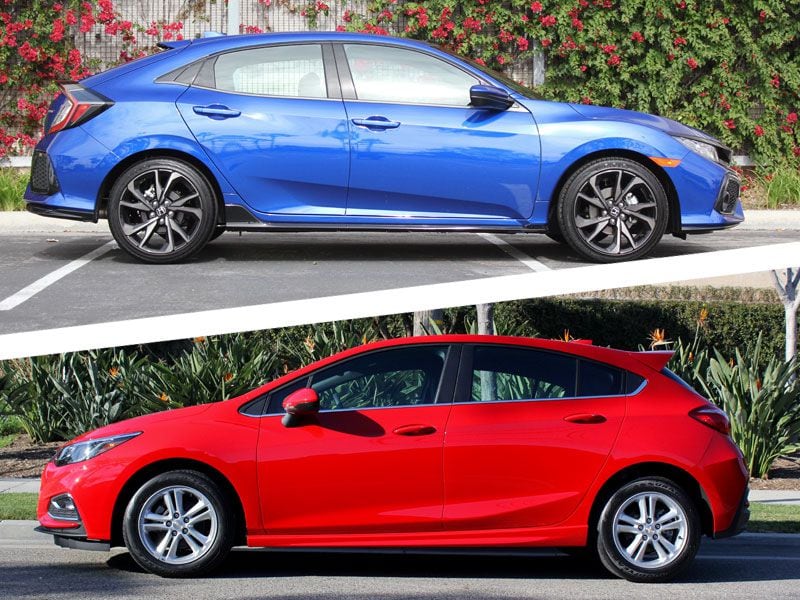
2017 Honda Civic hatch vs 2017 Chevrolet Cruze hatch by Miles Branman exterior profile ・ Photo by Miles Branman
Americans have fallen in and out of love with hatchbacks over the years, but automakers have decided it’s the right time to offer more models in 5-door form. With greater utility than a standard compact sedan, hatchbacks maintain the price point and footprint of a smaller vehicle while flexing to the storage of a larger vehicle. 5-doors also have distinctive styling for those who are tired of the same old sedans.
Two of the most appealing models in this segment are fresh on the scene for 2017. While Chevrolet has sold a 5-door form of the Cruze in Europe since 2011, only the second generation car (introduced in 2016) made its way to the states as a hatch. Honda, meanwhile, sold a Civic hatchback in the U.S. until 2005, when it discontinued the 5-door Si. This year, the Japanese automaker re-introduced the utilitarian body style with its 10th generation Civic’s design language.
In this article, we’ll compare the 6-speed manual versions of the Chevrolet Cruze Hatchback LT ($21,240) and the Honda Civic Hatchback Sport ($21,300) to find out which is best.
Styling
For many hatchback buyers, styling is the most important trait of a good 5-door. Deciding between the conservative design of the Chevy Cruze or the bold look of the Honda Civic will come down to personal taste, but here’s a quick rundown on each car’s most distinctive cues.
Honda’s new Civic is a dramatic departure from previous generations, and its styling varies quite a bit between coupe, sedan, and hatchback variants. The 5-door Civic Sport is the most aggressive look between the three, with standard 18-inch wheels, LED daytime running lights, large air inlets, dual center-exit exhaust ports, a trunk-mounted spoiler, and black gloss trim bordering the bottom of the car. I’m a big fan of the sporty stance.
The Cruze may not be as flashy as the Civic, but it’s certainly handsome. A steeply raked roof, narrow top grille, slender LED running lights, trunk-mounted spoiler, and 16-inch wheels give the impression of maturity without seeming drab.
Though higher trim versions of the Cruze add bigger wheels and more curb appeal, the price-comparative Civic comes with these accents as standard. We’ll award style points to the Civic.
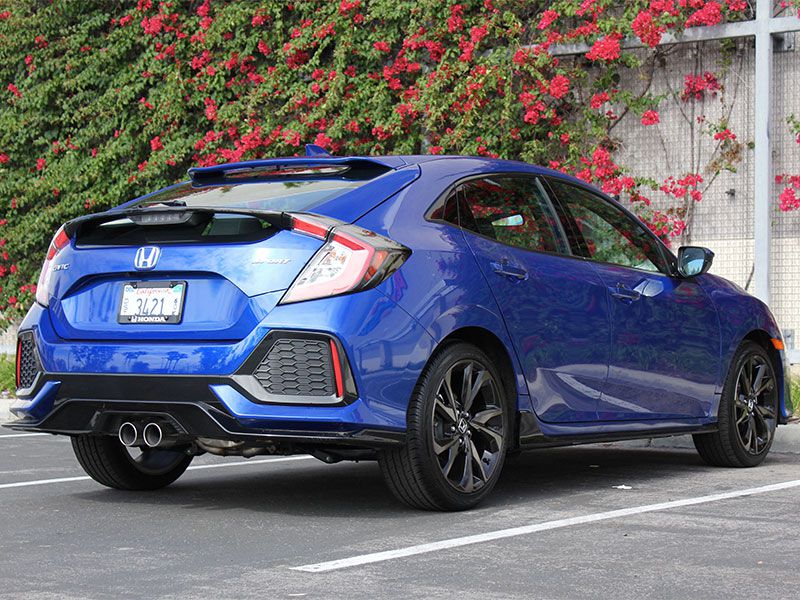
Photo by Miles Branman
Interior
Though the Cruze has a high-end exterior design, its cabin isn’t nearly as impressive. Chrome-painted plastics, rough surfaces, and uninspired shapes don’t exactly welcome passengers. There are three highlights to the Cruze’s interior: fabric panels on the dashboard and door panels that break up the monotone look, extremely comfortable (albeit bland) seats, and a quiet ride. Though the Civic Hatchback Sport is positioned as an entry-level model, it masks its position extremely well. Aluminum pedals, sporty seat designs, leather-wrapped dashboard panels, shifter knob, and steering wheel, and carbon-fiber style trim inserts give the cabin plenty of life. While the Cruze’s cabin feels appropriate for the price tag, the Civic’s interior is considerably more premium.
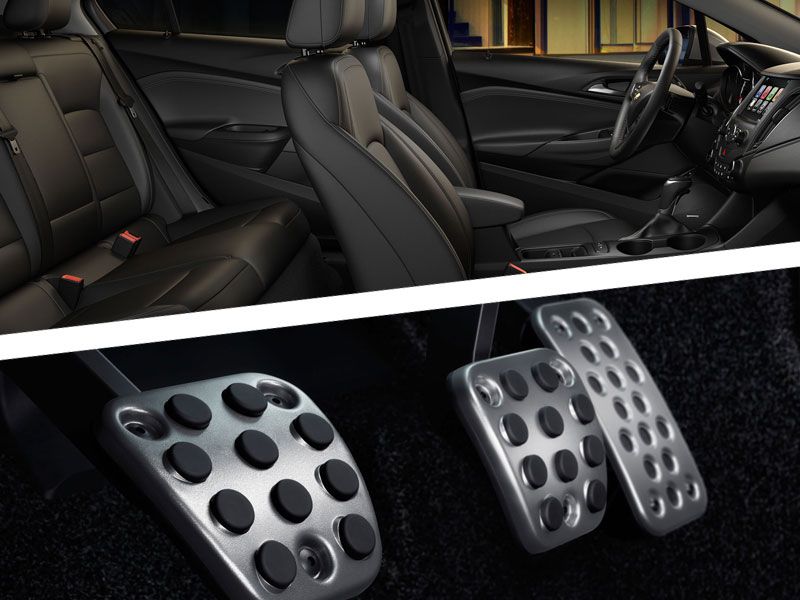
Photo by General Motors / Honda
Cabin Volume
Apart from a hatchback’s look and feel, its utility is most important. Both the Civic and Cruze make some sacrifices to overall volume in the name of styling, but each is still notably more versatile than their sedan counterparts. With the 60/40 split-folding rear bench in place, the Cruze hatch offers 23 cubic feet of cargo room. With rear seats stowed, it offers 47 cu. ft. The Civic Hatchback matches the Cruze’s volume with its rear seats in place, but offers one cubic foot less (46) with seats folded. As passenger volume goes, both the Civic and Cruze feel spacious, with plenty of leg and headroom. It’s a narrow victory, but the Cruze ekes out a win for cargo volume.
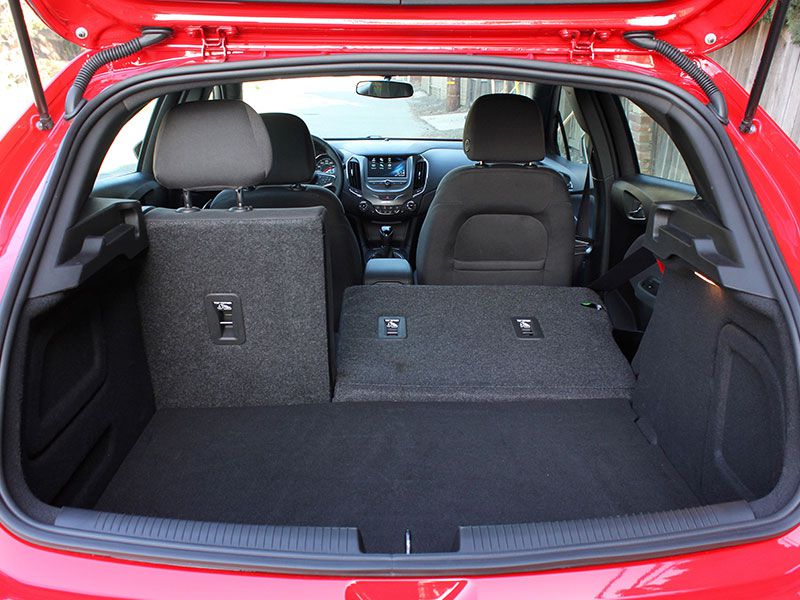
Photo by Miles Branman
Technology
When it comes to interior technology and convenience features, the Chevrolet Cruze Hatchback shifts momentum from the Civic. Standard on the Cruze LT is a 7-inch Chevy MyLink infotainment system with Apple CarPlay and Android Auto integration, push-button ignition, one-touch proximity door locks for all four doors, Bluetooth, a USB input, six months of SiriusXM satellite radio, a 4G LTE data connection with Wi-Fi hotspot, and a backup camera. Honda’s Civic Hatch Sport makes do with a 5-inch color audio display (which isn’t very sharp or quick to respond), Bluetooth, USB, Apple CarPlay and Android Auto, a backup camera, and automatic climate control. It’s a reasonable assortment of features, but nowhere near as robust as the Cruze. Chevy’s Cruze Hatchback notches a victory in the technology department, due in large part to its snappy, vivid infotainment and driver displays.
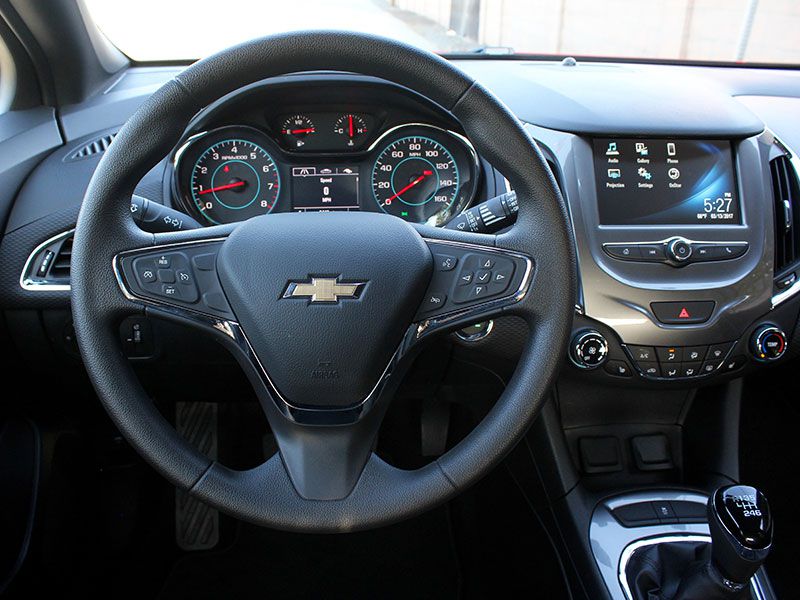
Photo by Miles Branman
Engine and Transmission
The Cruze and Civic wage a battle of compact, turbocharged engines, but Honda brought way more backup to this fight. Powering the Civic Hatchback Sport is a 2.0-liter turbocharged 4-cylinder making 180 hp and 177 lb-ft of torque. Negotiating that output with the front wheels is an excellent, notchy 6-speed manual.
Chevrolet’s Cruze Hatchback employs a 1.4-liter turbo 4-cylinder with 153 hp and 177 lb-ft of torque on hand. A diesel powertrain with more torque and better fuel economy will be available down the road. While the Civic’s gearbox isn’t perfect (an overly light clutch pedal and rev hang between shifts isn’t the best combination), it’s leagues better than Chevy’s offering. A clump of plastic serves as the shift knob, which is awkward to handle regardless of hand size. Shift throws are long and the gear engagement point is ambiguous.
The Civic’s smooth power delivery and ample grunt bests the Cruze’s tall gearing and painful turbo lag.
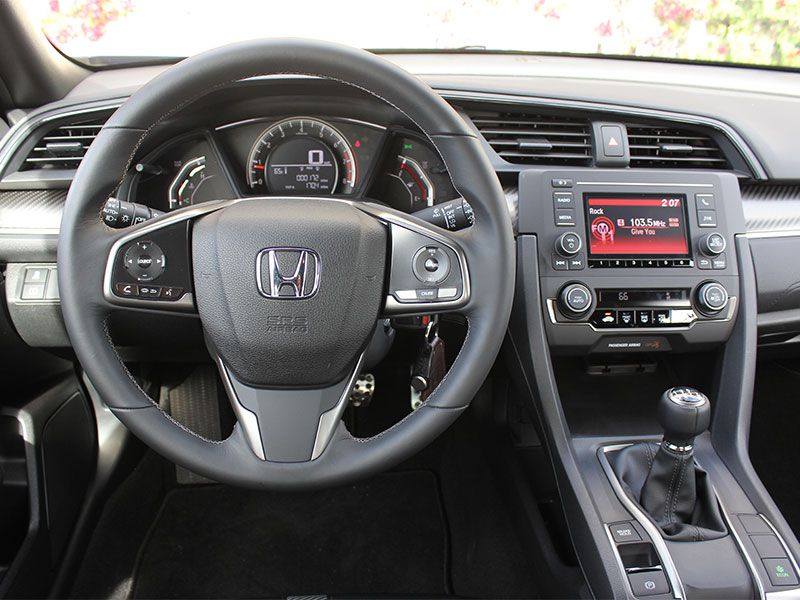
Photo by Miles Branman
Ride and Handling
Straight-line speed and smooth shifting are great, but how do the hatchbacks compare in ride quality and handling? Both vehicles are built on solid platforms, both respond quickly to steering inputs, and both soak up rough pavement with ease. The biggest difference between the Cruze and Civic is their level of control and stability while cornering. With about 100 fewer pounds to tote, the Civic feels composed at just about any speed. The Cruze, however, feels uncertain at the limit (due in part to narrow tires), and floats through curves instead of hunkering down. In short, the Civic Hatchback acts like a performance vehicle (and indeed, its platform will underpin the very hot Type R), while the Cruze behaves like a softly sprung economy car.
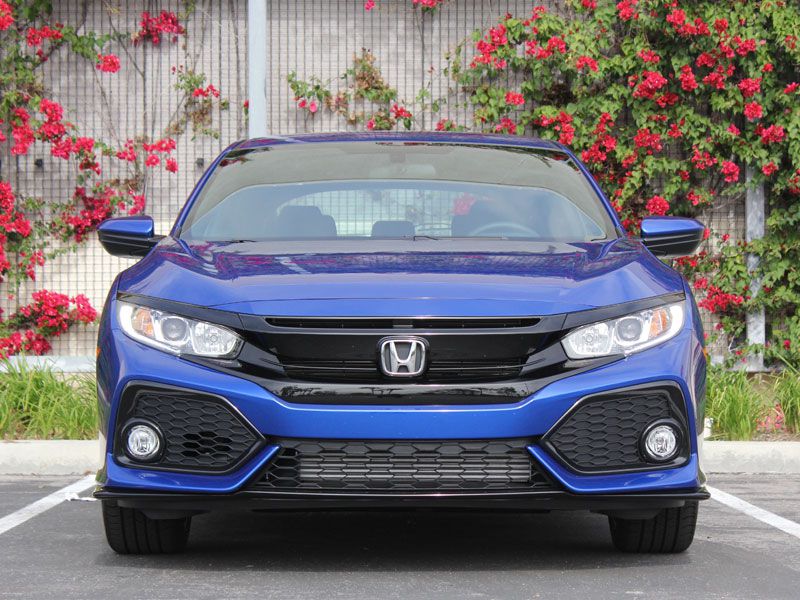
Photo by Miles Branman
Fuel Economy
The Honda Civic continues its string of category victories as we assess fuel economy ratings. The Hatchback Sport gets an EPA-estimated 30 mpg in the city, 39 mpg on the highway, and 33 combined. By comparison, the Cruze Hatchback returns 28 mpg in the city, 39 mpg on the highway, and 31 combined. Though the Cruze uses a smaller motor, its additional weight ultimately puts it at an efficiency disadvantage.
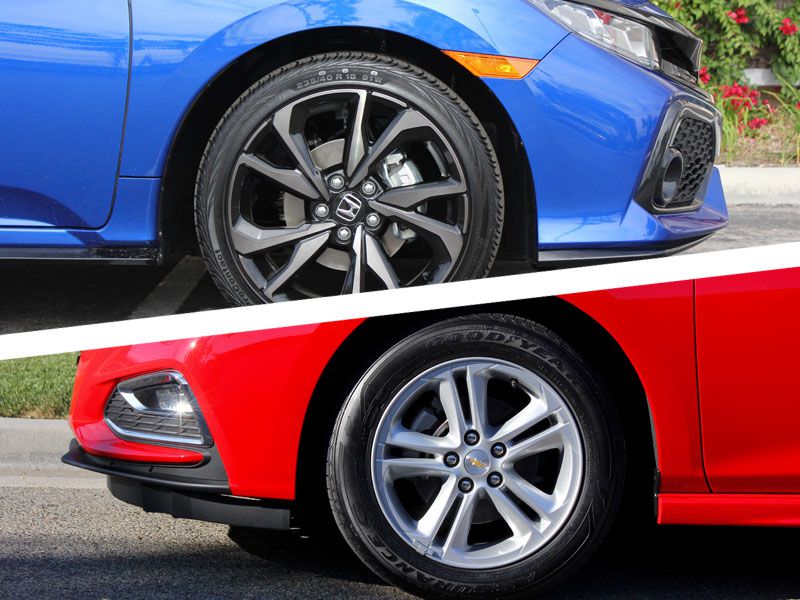
Photo by Miles Branman
Safety
In yet another critically important aspect, the Honda Civic Hatchback comes out on top: safety. Not only did the Civic get a 5-star overall rating from the NHTSA, it’s also available with Honda’s suite of safety technologies: adaptive cruise control, collision mitigation braking, forward collision warning, lane keeping assist, and road departure mitigation. Though the Chevy Cruze Hatchback comes standard with 10 airbags and OnStar crash response, it only earned a 4-star NHTSA safety rating and isn’t available with the same safety tech as the Civic.
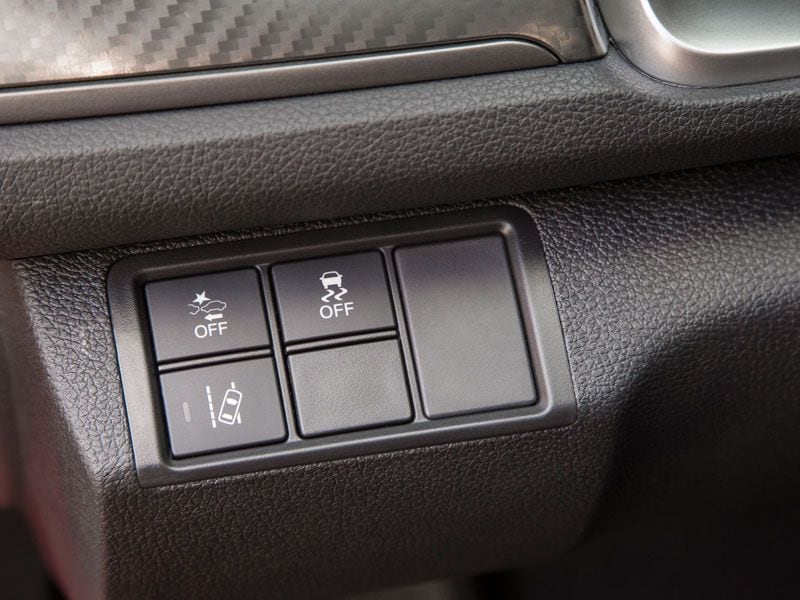
Photo by Honda
Value
We’ve reviewed many of the individual features that establish vehicle value, but let’s bring everything together to create a better picture of which hatchback offers more for the money. Priced within $60 of one another, neither car can point to a significantly cheaper starting figure. Instead, Chevrolet and Honda appear to be targeting different audiences with their vehicles. The Civic is focused heavily on styling, safety, and performance, while the Cruze lobbies comfort and connectivity. If you prize convenience features, the Cruze is loaded with value, but if you want to stand out from the compact vehicle crowd, Honda’s Civic has an attractive design and enthusiastic driving dynamics that are anything but normal for the segment. Alas, crowning a value leader is difficult, but I’d argue the Civic is more appealing to the greatest number of people.
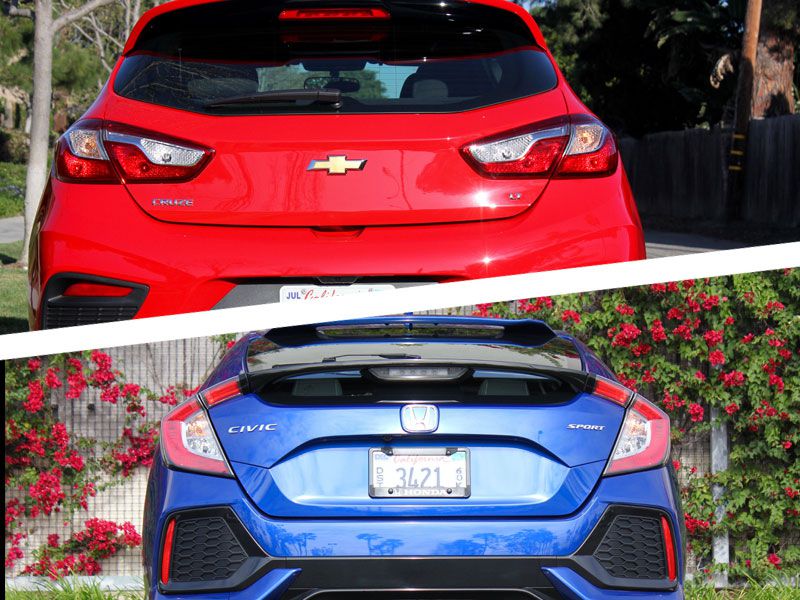
Photo by Miles Branman
Verdict
Decision time. Tallying up the victories, Honda’s Civic Hatchback Sport is more striking inside and out, has more power, is better on gas, corners with more confidence, offers better safety features, and boasts more standard value. That leaves the Chevrolet Cruze Hatchback LT with wins in cargo volume and technology. The Civic Hatch wins this comparison by a wide margin. If you remove the Civic from play, the Cruze seems like a much better product. Unfortunately for Chevy, Honda's offering re-imagines the 5-door in a way that leaves the competition stunned.
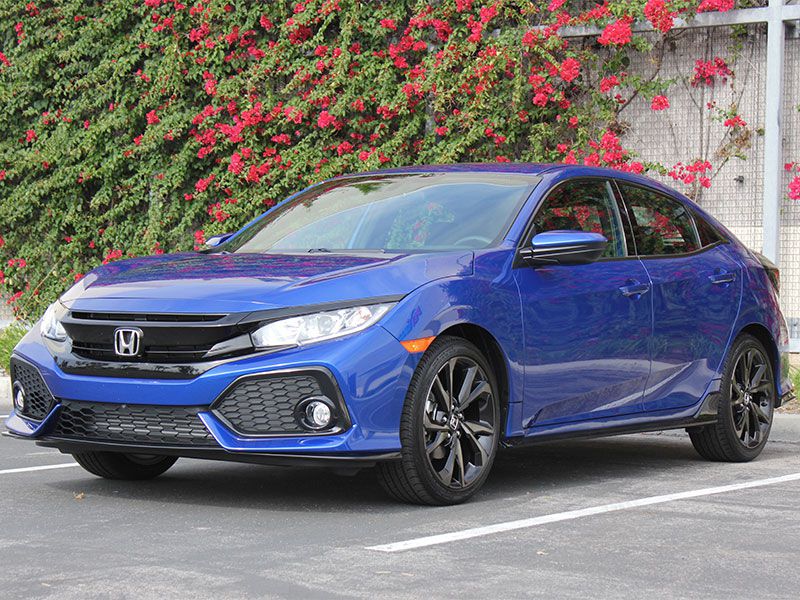
Photo by Miles Branman